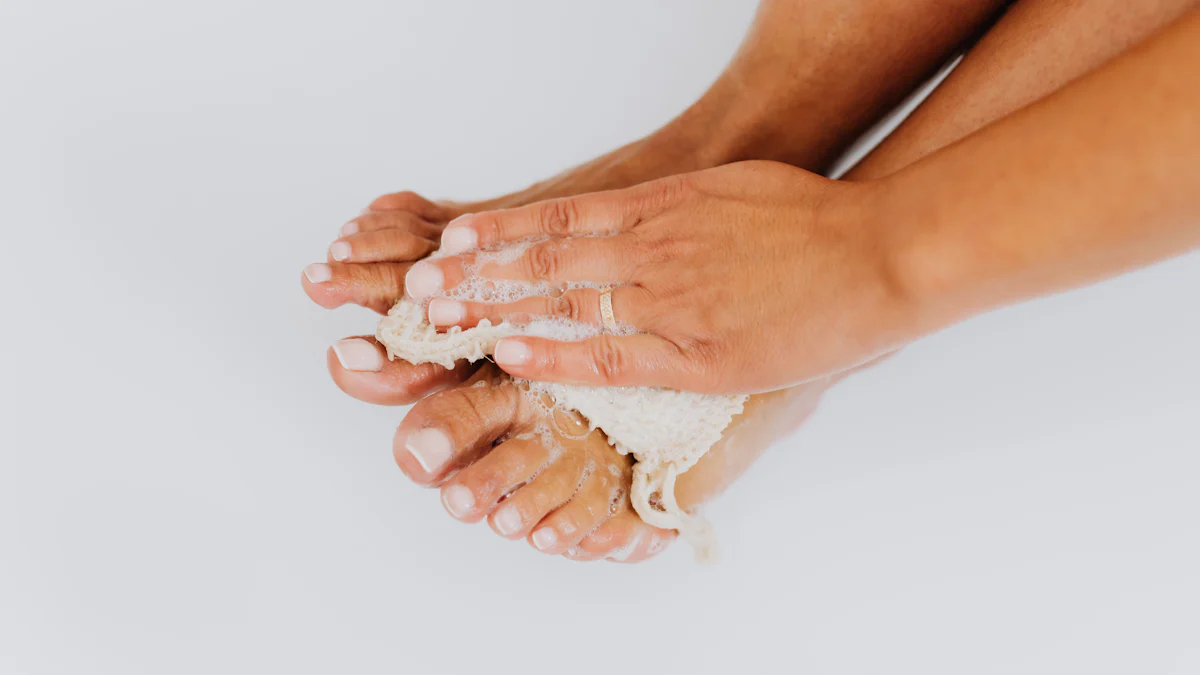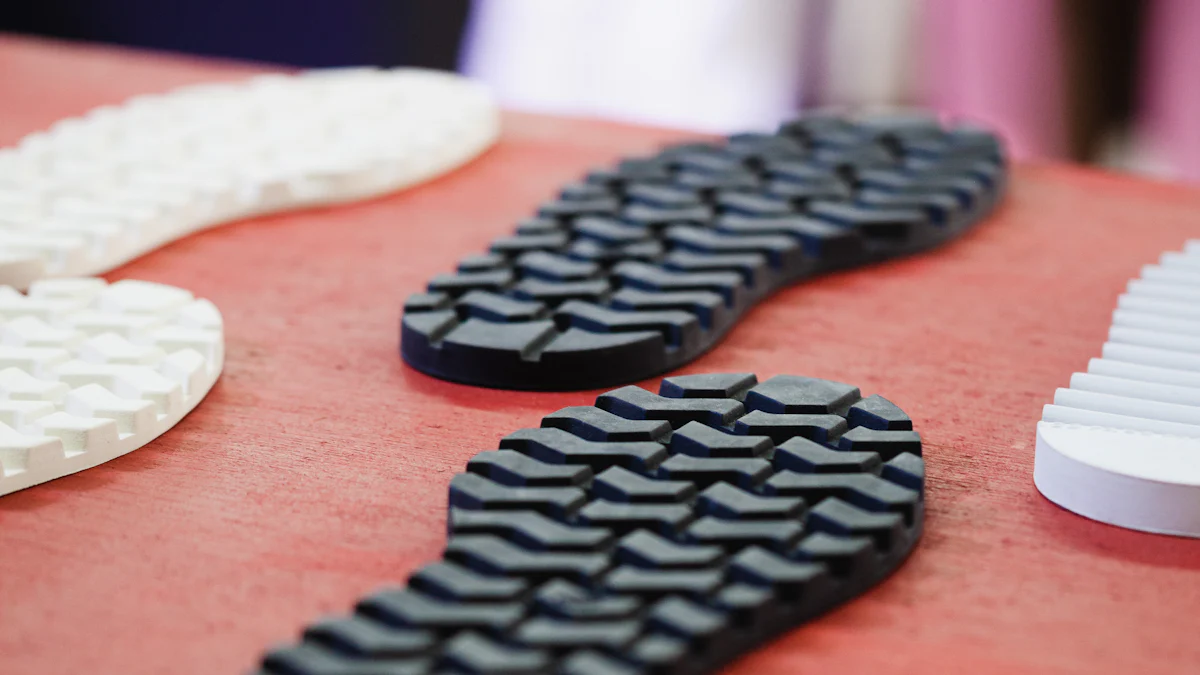How to Select the Perfect Arch Support Insoles for Your Feet

Selecting the right arch support insoles starts with understanding your arch type. You can determine this through simple tests like the wet foot test or the paper test. Comfort plays a crucial role in your choice. Poorly fitting insoles can lead to discomfort and exacerbate foot issues.
When choosing insoles, consider these key factors:
Know your shoe size and foot type.
Ensure the insert fits your shoe properly.
Allow for a break-in period.
Replace your inserts after 12 months.
With about 4 percent of the population experiencing flat feet, finding the right arch support insole is essential for overall foot health.
Key Takeaways
Find out your arch type with easy tests. You can use the wet foot test or the paper test. This helps you pick the right insoles for your feet.
Comfort is very important when choosing insoles. Always try them on in your shoes. Give them time to break in so they fit well and give support.
Pick the right type of insole for your foot problem. Rigid insoles are good for flat feet. Soft insoles work better for high arches.
Change your insoles every 6 to 12 months. This keeps your support and comfort good. Check for signs of wear like thinning or less cushioning.
Choose insoles that fit your shoes. Athletic shoes need more cushioning. Dress shoes need low-profile insoles for support without losing style.
Determine Your Arch Type

Understanding your arch type is crucial for selecting the right arch support insoles. You can use several methods to determine your arch type effectively.
The Wet Foot Test
This simple test helps you identify your arch type at home. Follow these steps:
Wet the soles of your feet by stepping into the pan.
Step onto a piece of paper to observe the imprint.
Once you have your footprint, analyze it. Here’s what to look for:
Flat (Low) Arch: A mostly filled imprint indicates your foot collapses inward.
Normal Arch: A half-visible arch region shows you have normal support.
High Arch: Little to no arch visible suggests poor shock absorption.
The Paper Test
The paper test is another easy method. You will need a piece of paper and a pen. Here’s how to do it:
Place the paper on a flat surface.
Stand on the paper with your full weight.
Trace around your foot.
After tracing, examine the shape. Similar to the wet foot test, you can determine your arch type based on the imprint.
Professional Assessment
If you want a more accurate assessment, consider visiting a podiatrist or a specialized shoe store. Professionals can evaluate your foot structure and gait. They may use advanced tools to measure your arch height and foot mechanics. This assessment can provide valuable insights into your foot health and help you choose the best arch support insoles.
By understanding your arch type, you can make informed decisions about the insoles that will provide the best support for your feet.
Importance of Comfort
Comfort plays a vital role in your overall foot health. When you wear insoles that fit well and provide adequate support, you can enjoy numerous benefits. Here’s how comfort affects your foot health:
Insoles offer support, stability, and cushioning, which can prevent foot fatigue, injury, and pain.
They provide arch support, pain relief, and improved alignment, especially if you have flat feet or high arches.
Insoles alleviate pressure on specific areas like the heel or ball of your foot, enhancing overall comfort and health.
When your insoles lack comfort, you may experience several signs indicating a poor fit. Watch for these symptoms:
Persistent foot pain or discomfort after prolonged standing or walking.
Blisters or calluses forming on your feet.
A feeling of instability while walking or running.
If you notice any of these signs, it may be time to reassess your insoles.
Finding the right fit is crucial for maximizing comfort. Here are some tips to help you choose the best arch support insoles:
Measure Your Feet: Always measure your feet before purchasing insoles. Sizes can vary between brands.
Try Before You Buy: If possible, try on the insoles in your shoes. Walk around to see how they feel.
Consider Your Activities: Think about your daily activities. Choose insoles that match your lifestyle, whether for sports, work, or casual wear.
Break-In Period: Allow time for your insoles to adjust to your feet. A short break-in period can enhance comfort.
By prioritizing comfort in your choice of arch support insoles, you can significantly improve your foot health and overall well-being.
Types of ARCH SUPPORT INSOLES

When selecting the right arch support insoles, you will encounter three main types: rigid, semi-rigid, and soft. Each type serves different needs and foot conditions. Understanding these differences can help you make an informed choice.
Rigid Insoles
Rigid insoles are made from solid plastic materials. They provide firm support and help correct foot movement. This type of insole is often recommended for conditions like Achilles tendonitis, heel inflammation, and plantar fasciitis. These issues frequently arise from abnormal foot movement. Rigid insoles can improve comfort over time by stabilizing your foot and reducing strain.
Benefits of Rigid Insoles:
Offer strong support for your arches.
Help align your feet properly.
Reduce pain associated with specific foot conditions.
Semi-Rigid Insoles
Semi-rigid insoles combine features of both rigid and soft insoles. They provide moderate support while still offering some cushioning. This balance makes them suitable for various activities, from sports to everyday wear. If you need support but also want comfort, semi-rigid insoles might be the right choice for you.
Benefits of Semi-Rigid Insoles:
Provide a blend of support and cushioning.
Suitable for active lifestyles.
Help alleviate general foot pain.
Soft Insoles
Soft insoles are made from materials like foam or gel. They offer maximum cushioning and comfort. These insoles are ideal for those who spend long hours on their feet or have conditions that require extra padding. While they may not provide as much arch support as rigid or semi-rigid options, they can still enhance comfort significantly.
Benefits of Soft Insoles:
Cushion your feet against impact.
Reduce pressure on sensitive areas.
Ideal for casual footwear and daily use.
By understanding the types of arch support insoles available, you can choose the one that best fits your needs and lifestyle.
Recommendations Based on Foot Conditions
Selecting the right arch support insoles can significantly improve your comfort and foot health, especially if you have specific foot conditions. Here are tailored recommendations based on common issues:
Flat Feet
If you have flat feet, you may experience discomfort due to a lack of arch support. Look for insoles that provide firm support to help maintain your foot's natural shape. Rigid or semi-rigid insoles work well for flat arches. They help distribute weight evenly and reduce strain on your feet.
Key Features to Consider:
Arch Support: Choose insoles with a defined arch to prevent your foot from collapsing inward.
Cushioning: Look for additional cushioning to absorb shock and enhance comfort.
High Arches
High arches can lead to excessive pressure on the heel and ball of your foot. This condition often results in pain during activities. For high arches, opt for insoles that offer cushioning and moderate support. Soft insoles can provide the necessary padding while still supporting your arch.
Key Features to Consider:
Cushioned Insoles: These help alleviate pressure points and provide comfort.
Flexible Design: A flexible insole allows for natural foot movement while still offering support.
Plantar Fasciitis
Plantar fasciitis is a painful condition caused by inflammation of the plantar fascia. Supportive insoles are crucial for managing this condition. Look for orthotic arch supports that provide rigid or semi-rigid support to maintain foot shape. Cushioned arch supports can also relieve fatigue and discomfort.
Recommended Insole Types:
Type of Insole | Description |
|---|---|
Orthotic Arch Supports | Provide rigid or semi-rigid support to maintain foot shape, focusing on arch and heel support. |
Cushioned Arch Supports | Offer flexible support with padded cushioning, ideal for relieving foot fatigue. |
Flat Cushioning Insoles | Provide no arch support but add extra cushioning to shoes. |
By selecting the right insoles based on your foot condition, you can enhance your comfort and overall foot health.
General Foot Pain
General foot pain can affect anyone, regardless of age or activity level. You may experience discomfort due to various factors, including improper footwear, overuse, or underlying medical conditions. Selecting the right arch support insoles can help alleviate this pain and improve your overall foot health.
Here are some common causes of general foot pain:
Improper Footwear: Wearing shoes that lack support can lead to pain. High heels, flip-flops, and worn-out shoes often contribute to discomfort.
Overuse: Spending long hours on your feet can cause fatigue and soreness. This is especially true for those who stand or walk for extended periods.
Foot Structure: Flat feet or high arches can lead to uneven weight distribution, causing pain in various areas of your feet.
To address general foot pain, consider these tips when selecting insoles:
Choose Supportive Insoles: Look for insoles that provide adequate arch support. This helps distribute your weight evenly and reduces strain on your feet.
Opt for Cushioning: Insoles with cushioning can absorb shock and provide comfort. This is especially important if you spend long hours on your feet.
Consider Your Activities: Think about your daily activities. If you engage in sports or physical work, choose insoles designed for those specific needs.
Tip: Always try on insoles in your shoes before purchasing. Walk around to ensure they feel comfortable and supportive.
If you continue to experience foot pain despite using supportive insoles, consult a healthcare professional. They can help identify any underlying issues and recommend appropriate treatments.
By selecting the right arch support insoles, you can take significant steps toward reducing general foot pain and enhancing your overall comfort. Prioritize your foot health, and enjoy a more active lifestyle!
Choosing ARCH SUPPORT INSOLES for Different Footwear
Selecting the right arch support insoles depends on the type of footwear you plan to use. Each type of shoe has unique requirements that can affect your comfort and support. Here’s how to choose the best insoles for various footwear styles.
Athletic Shoes
When you wear athletic shoes, you need insoles that provide ample cushioning and support. These shoes often undergo dynamic movements, so your insoles should accommodate that. Look for insoles designed specifically for athletic activities. They should offer:
Enhanced Cushioning: This helps absorb shock during high-impact activities.
Arch Support: Proper support prevents foot fatigue and injuries.
Stability: A snug fit keeps the insole in place during movement.
To ensure a proper fit, check your shoe size. A well-fitted shoe holds the insole securely. Lace your shoes snugly, but not too tight, to stabilize both your foot and the insole. If needed, use double-sided tape or adhesive pads to keep the insoles from sliding.
Casual Footwear
Casual shoes often prioritize comfort over performance. However, you still need adequate support. Choose insoles that provide a balance of cushioning and arch support. Here are some tips:
Select Soft Insoles: These offer comfort for daily wear.
Consider Your Activities: If you walk a lot, opt for insoles that reduce pressure on your feet.
Check for Fit: Ensure the insoles fit well within your casual shoes without crowding your toes.
Dress Shoes
Dress shoes often lack the support found in athletic or casual footwear. You can still find insoles that provide support without sacrificing style. Look for low-profile insoles that fit comfortably in your dress shoes. Consider these features:
Thin Design: This allows for a sleek look while providing support.
Arch Support: Even dress shoes need some level of arch support to prevent discomfort.
Cushioning: Choose insoles with cushioning to enhance comfort during long wear.
By selecting the right arch support insoles for your footwear, you can improve your comfort and foot health significantly.
Selecting the right arch support insole is essential for your foot health. Proper insoles can alleviate pain, enhance comfort, and improve your overall well-being. Take the time to assess your personal foot needs. Consider your arch type, daily activities, and any specific foot conditions.
Making informed choices about your insoles can lead to significant improvements in your comfort and mobility. Prioritize your foot health today for a more active tomorrow!
FAQ
What are arch support insoles?
Arch support insoles are inserts designed to provide support to the arches of your feet. They help distribute weight evenly, reduce pain, and improve overall foot alignment.
How often should I replace my insoles?
You should replace your insoles every 6 to 12 months, depending on wear and tear. Signs of wear include thinning, loss of cushioning, or visible damage.
Can I use arch support insoles in any type of shoe?
Most arch support insoles fit well in athletic, casual, and some dress shoes. Always check the insole's thickness and design to ensure a proper fit in your specific footwear.
Do I need custom insoles?
Custom insoles may benefit those with specific foot conditions or severe pain. However, many over-the-counter options provide adequate support for general foot health.
How do I clean my insoles?
You can clean most insoles with mild soap and water. Allow them to air dry completely before placing them back in your shoes. Avoid direct sunlight or heat sources.